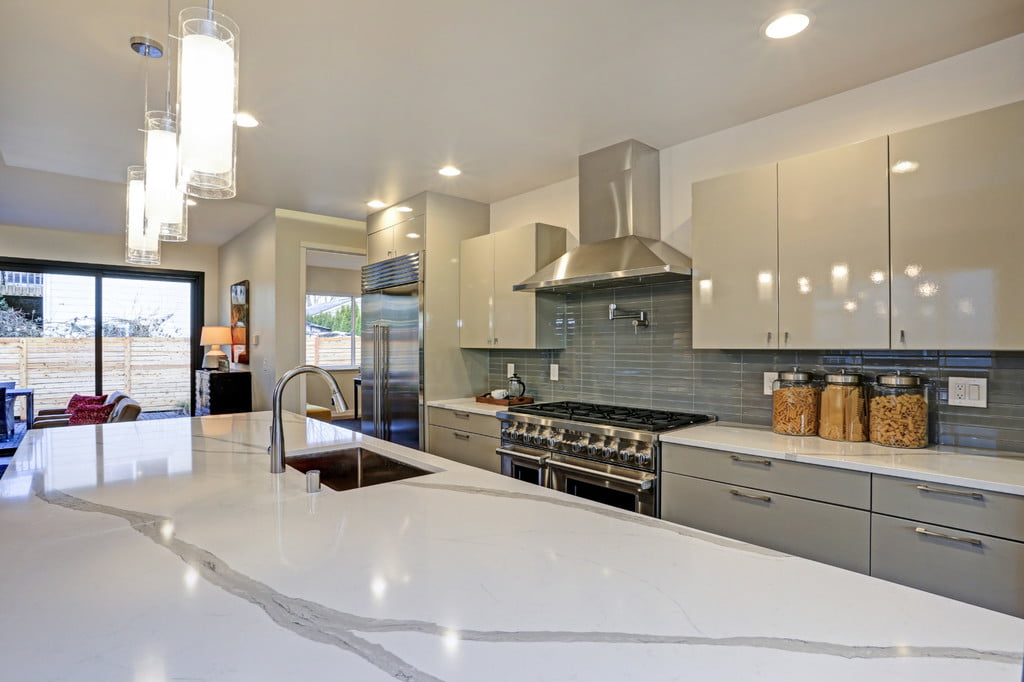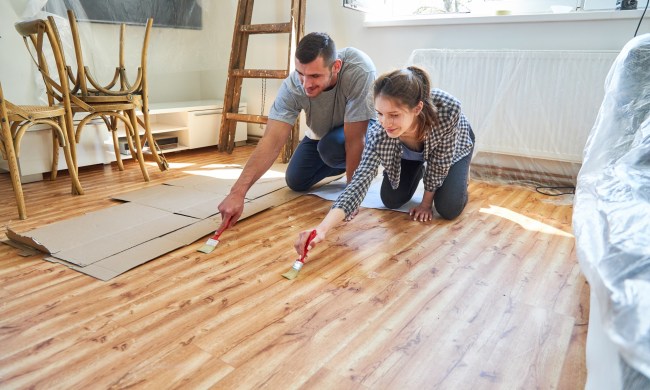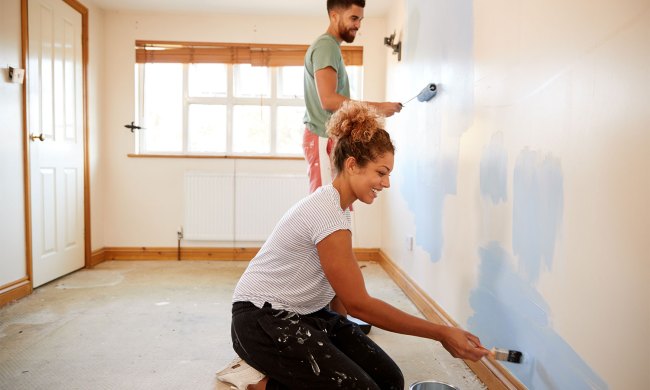Of all the rooms in your home, your kitchen is the area that likely deserves a good deep clean. Perhaps the most neglected area is your kitchen cabinets. It can be tedious emptying all of the contents, inspecting for hazards, dusting, cleaning, drying, and then putting all your dishes and appliances back in place.
However, it is important because those untouched, closed-off nooks and crannies can house harmful mold, insects, and other undesirable nuisances. There are ways to make it a simpler process. If you’d like to know how to clean kitchen cabinets more efficiently, take a look at these helpful suggestions.

Make sure you have the right cleaner
Before you start emptying your cupboards, take stock of the type of textiles you are cleaning. Most kitchen cabinets are crafted with some type of wood, and woods can be sensitive to many types of cleaners. If you grab whatever cleaners you happen to have on hand, you run the risk of staining, warping, or stripping the varnish from your wood. Depending on the finishes of the handles and knobs, you should keep in mind certain polishes, also. Brass, silver, and other metals will really shine with the correct solution.
Homemade solutions that make effective cleaners
You don’t need to drive to the store for a specialty cleaner because you likely have everything you need stored at home.
Vinegar
Vinegar has long been utilized for its ability to break down tough dirt and grime. If you mix a solution made with equal parts vinegar and warm water, that will be a great starting point. It’s even better when poured into a spray bottle so you can distribute your solution more effectively as you clean.
If your cabinets are sticky or greasy or haven’t been cleaned in a long time, you may want to add a few drops of liquid dishwashing detergent to the vinegar solution. If they aren’t filthy and you’re just doing maintenance cleaning, leave the soap out of the mixture since soap can leave a residue that will require you to wipe the cabinets again, and you don’t want to create more work for yourself.
Vegetable oil and baking soda
You can also try mixing 1/2 cup of vegetable oil with 1 cup of baking soda until a paste forms. Scrub with it, and then make sure to wipe off any excess before smoothing things over and drying.
White vinegar and olive oil
Lastly, a tried and true wood cabinet formula can be made using 1/2 cup of white vinegar, 1/4 cup of olive oil, one tablespoon each of lemon juice and vegetable glycerin, and 20 drops of lavender essential oil. Mix well and spray before scrubbing.
Dish soap
If you are worried that vinegar will take off the finish of your cabinets, just use a light soap solution. Dish soap in small amounts will work great at eliminating grime and thick layered dust. Using small scrubbers or cleaning toothbrushes will aid you in cleaning the corners and other hard-to-reach places.
Make sure you clean everywhere
If you want things to feel truly fresh and thoroughly clean, leave no stone unturned. Now that you’ve emptied everything out, you might as well make it worth the time spent. Clean the inside of your cabinet doors, the sides, and the top and bottom of each shelf. Even if you use liners, you may be surprised that dust and sticky residue can still collect between a liner and the actual shelf. If you end up wiping out crumbs or other debris, save the mopping of the floors for last. It is vital for you to allow all surfaces to dry completely before returning all your belongings to their designated places.
Get the crevices
Most cabinets and drawers have crevices or trim that require some finer detailing. Dip an old toothbrush into the vinegar and water solution and scrub the intricate places that cloth just won’t get into. A toothbrush also works well on the narrow sides of the drawers and cabinets. If there are stubborn spots such as chocolate or syrup, you can make a paste out of either salt or baking soda and vinegar and use the toothbrush to scrub the stain. Don’t press too hard, though, or you’ll scratch the surface of the cabinet. Once you’ve finished with the toothbrush, wipe the insides of the doors and drawers.
Pay attention to handles and knobs
Now is also a good time to take off any handles and knobs that need to be cleaned. Make a separate bowl of hot water and white vinegar to soak them in while you complete the rest of the steps below. After soaking, most will need a final wipe and rinse before you put them back on your clean cabinets. This also gives you a chance to tighten loose screws. If you find some of the screws are loose and won’t tighten, a bit of wood glue will do the trick.
Consider taking off the cabinet doors
In addition to removing all of your stored items from your cabinets, grab a screwdriver and remove the doors, as well. If you’re not sure how to clean kitchen cabinet doors, just pay attention to the textile. If they are the same wood-type surface as the interior of your cabinets, you can use the same solution you’ve already prepared.
Purge unwanted items
Purge unwanted items and chipped dishes as you remove everything from your cabinets. A good purge is always freeing and fulfilling.

Enjoy the fruits of your labor
If you are putting off the deep clean of your kitchen, don’t wait another day. With these helpful tips, you can easily prepare your cabinets, mix your own natural cleaning solution, and de-gunk your kitchen cabinets with ease. Make sure you use chemicals that are non-abrasive to your cabinet’s textile. Keep in mind that many of the best cleansers are already in your pantry. Little steps like removing cabinet doors and grabbing a cleaning toothbrush will make this task feel less strenuous for you. When you’re done, not only will you feel accomplished, but your kitchen will feel brighter and lighter.



